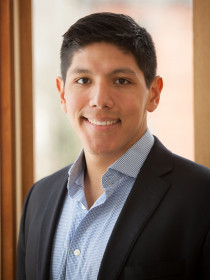About Michael
Sierra-Arévalo's current research focuses on policing in the United States and employs ethnographic observations and interviews across three urban departments to investigate police culture and how it shapes police perception and practice on the street. Michael’s research interests also include gangs, firearms, social networks, and violence prevention. In addition to peer-reviewed research, he continues to work with practitioners to use data-driven approaches to enhance public safety. His research has appeared in Law & Society Review, Crime & Delinquency, Annual Review of Law and Social Science, and multiple edited volumes.
Michael holds a PhD in Sociology from Yale University and a BA in Sociology and Psychology from the University of Texas at Austin.
Learn more about Sierra-Arévalo on his personal website.
Contributions
How Targeted Deterrence Helps Police Reduce Gun Deaths
In the News
Publications
Uses ethnographic observations and unstructured interviews across three urban police departments to describe how the TASER affects officers' understanding and use of force in beneficial and unintended ways. Finds that officers understand and use the TASER as a device that can enhance safety for themselves and suspects, including in cases where the TASER is used in lieu of lethal force that officers believe would have been justified. Despite these benefits, understanding of the TASER as a safety-enhancing technology also influences the use of excessive force via TASER by young, inexperienced officers, ultimately contributing to the very problem TASERs were intended to ameliorate.
Details the implementation of a SNA program developed by the COPS Office in partnership with Yale University. Created as part of a violence prevention initiative in New Haven, Connecticut, the Project Longevity SNA program emphasizes the value of community collaboration when gathering critical information such as the location and membership of these groups. Noting that transparency and community involvement in data collection encourage community support, the report also describes the benefits of focused deterrence activities, thereby reducing arrests and increasing efficiency. In addition to a detailed introduction to SNA and the ways it can be adapted to community and law enforcement needs, this report provides examples of SNA strategies used in other cities and practical guidelines for implementation.
Traces the origins, development, and use of social network analysis in gang research and gang violence reduction strategies. Although early gang scholars intuitively recognized the networked nature of gangs and gang violence, such insights were not always leveraged by gang violence reduction efforts that became increasingly enforcement-centric throughout the twentieth century. This review describes these historical shifts, the recent advent of social network analysis in research and gang interventions, and future directions that research and interventions can take to develop a more victim-focused approach to gang violence reduction.
Evaluates Project Longevity, a statewide focused deterrence gun violence reduction strategy begun in November 2012, in New Haven, Connecticut. The intervention brings law enforcement, social services, and community members together to meet with members of violent street groups at program call-ins. Using autoregressive integrated moving average models and controlling for the possibility of a non-New Haven–specific decline in gun violence, a decrease in group offending patterns, and the limitations of police-defined group member involved (GMI) categorization of shootings and homicides, the results of our analysis show that Longevity is associated with a reduction of almost five GMI incidents per month. These findings bolster research confirming the efficacy of focused deterrence approaches to reducing gun violence.
Draws on past work linking neighborhood violence to legal cynicism and uses data gathered by the Chicago Gun Project (CGP) to employ measures of police legitimacy to explore the effect of distrust of legal agents on protective gun ownership among active offenders in Chicago. Confirms that lower levels of police legitimacy are significantly related to a higher probability of acquiring a firearm for protection. Considers the ways that gang membership, legal changes in Chicago, and gun behaviors are related to protective gun ownership, as well as how community policing and procedural justice can improve perceptions of police and enhance their legitimacy, potentially reducing the incentives to engage in violent, extralegal “self-help” with a firearm.
Extends current applications of social network analysis to the study of gangs by offering a review of the current research, as well as suggesting some potentially fruitful lines of inquiry. Begins with a brief overview of key concepts and terminology in social network analysis, and moves into a more substantive discussion of the use of social network analysis in gang scholarship focusing on the network structure of gangs, group-level processes like cohesion and conflict, and applications of social network analysis to violence prevention work. Explains how social network analysis can augment the study of the geographic and social dimensions of gang space, and the new ways in which gangs are making use of virtual space.
